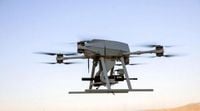In a dramatic escalation of tensions between India and Pakistan, reports have emerged that Pakistan successfully intercepted an Indian missile purportedly launched from an S-400 air defense system. This incident, which occurred near the town of Dinga in Pakistan's Punjab province, follows increased military activity from the Indian Air Force around Adampur Air Base. According to Pakistani defense sources, the missile in question was a 40N6E, recognized as the longest-range interceptor within India's Russian-made S-400 Triumf system.
"This interception represents a significant advancement in our air defense capabilities," a Pakistani military official stated, emphasizing the potential implications of this incident. If confirmed, it would be the first known instance of Pakistan's HQ-9P air defense system successfully engaging a missile fired from an S-400 battery.
While the Pakistani military claims that their HQ-9P system engaged the Indian missile, there has been no independent verification of this interception. Furthermore, Indian officials have not acknowledged any recent operations involving the S-400 system. Speculation regarding the missile's intended target suggests it may have been part of a broader retaliatory strike but miscalculated its trajectory, inadvertently crossing into Pakistani airspace.
In a parallel development, Indian military officials have accused Pakistan of deploying hundreds of Türkiye-manufactured armed drones, specifically the Asisguard Songar, in a significant cross-border confrontation. This drone, characterized by its octocopter design and sophisticated operational capabilities, has raised eyebrows among defense analysts due to the scale of its reported use.
The Songar drone is notable for its maximum takeoff weight of 44 kilograms and a payload capacity of up to 9 kilograms. It boasts a mission radius of 5 kilometers and can remain airborne for approximately 25 minutes. Equipped with a Gun Stabilization System compatible with 5.56 caliber assault rifles, the Songar is designed for precision operations.
Indian military sources reported that in response to the alleged drone incursions, their forces executed counterstrikes against four Pakistani air defense sites, claiming to have destroyed one radar installation. The situation escalated further with artillery exchanges across the Line of Control, resulting in casualties on both sides. Colonel Qureshi, during a briefing, noted, "Pakistan also carried out artillery shelling across the Line of Control using heavy caliber artillery guns and armed drones, which resulted in some losses and injuries to Indian Army personnel."
Indian authorities suggested that the drone incursions might have been intended to test their air defense systems and gather intelligence, a claim that has been met with skepticism among military observers. The technical specifications and operational logistics of the Songar drone raise questions about the accuracy of the initial assessments. As military tensions rise, both nations are on high alert, with each side monitoring the other's movements closely.
As reported by various defense analysts, the recent incidents underscore the precarious nature of Indo-Pakistani relations, particularly in light of historical conflicts and ongoing disputes over territory. The potential for miscalculations and unintended confrontations remains a significant concern as both countries continue to bolster their military capabilities.
In conclusion, these developments highlight the fragile balance of power in South Asia, as both India and Pakistan navigate a complex web of military posturing and strategic defense initiatives. The international community watches with bated breath, hoping for de-escalation amid rising hostilities.




